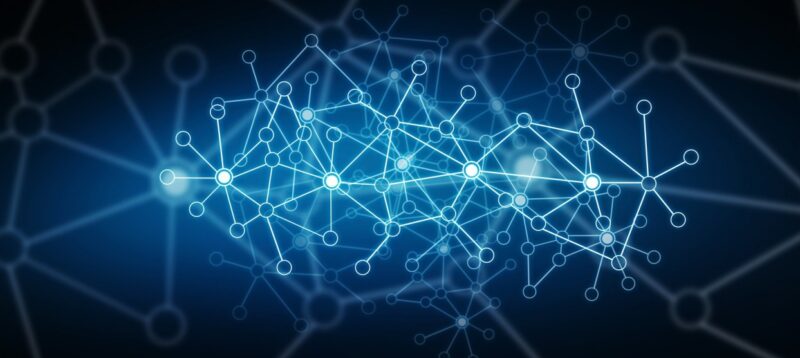The inception of currency in ancient times helped to raise the standard of living for societies around the world by creating a medium that can be used to obtain goods and services. Just a short while after the creation of currency, the practice of embezzlement also began to corrupt its purpose. From the stereotypical bank robbery to counterfeit to modern day bank system breaches, corruption aimed at commercial actions is an inconvenience at best, and an extreme danger to one’s way of living at worst.
To reduce the embezzlement stemming from activities involving traditional currency, organizations such as Satoshi Nakomoto and such individual authors as Vitalik Buterin and Gavin Wood have created the digital currencies Bitcoin and Ethereum. These currencies use blockchain technology, a public digital ledger that offers a faster and more secure medium to send information, initiate commercial transactions, and perform other online tasks. The speed and security offered by this innovation will change how we live on an individual, societal and global level by decentralizing vulnerable nodes of commerce, removing private information from trading entirely, and instituting an entirely new and innovative way of checking transactions.

With traditional banking establishments, the money involved in any interaction is kept in and monitored by the bank’s electronic database itself. The centralizing of a source of money in the database leaves it prone to targeted e-theft and impedes exchange speed between trading parties. The exchange speed can be slowed down since the bank must update each individual record on the sending party, receiving party, and bank intermediary. With a blockchain system, the interaction takes place only between the sending and receiving party via peer to peer sharing, which gives no central location for hackers and thieves to attack the system. Decentralizing the digital location of exchange also greatly increases transaction speed since the blockchain only must update two individual records that are always live.
On a personal level, traders of information will have increased confidence in making deals, which will encourage more economic activity on a societal scale. This effect is transmissible to a global level, where individuals and corporations will be able to exchange currency and other digitally based materials without potentially getting stuck in a foreign institution that may have different legal procedures for getting these items back. The foreign banking institution can also be involved in a data breach, making the resources being exchanged even harder to get back. If a polling place is targeted by a data breach, not only will the vote in each client’s name be compromised, but their personal information attached to their vote will be too. Hackers can use or sell your personal information, such as social security numbers, names, and addresses to cause much more damage than having your vote changed. The blockchain system circumvents this problem by not having your personal information used to make transactions at all. Instead, each user of the blockchain is given two highly complex and unique addresses to use their account, a public key and a private key. The public key is a public address that acts as an identifier for other people on the network to interact with, while the private key is a code you use to access sensitive elements associated with the public key. Both codes are generated by an extremely complex mathematical algorithm, which means that to reverse or change an exchange, an offender must expend a large amount of time and computing power to only obtain one user’s element. This means that large data breaches such as that of Equifax’s credit bureau in early 2019 will become much less common, where personal information will no longer be compromised from individual’s perspective, while the monetary damages inflicted on institutions via payouts to affected clients on a societal level will become nonexistent.
The main feature of the blockchain its adherence to a linear and chronological order of storing “blocks”, in which pieces of sensitive data, such as commercial transactions, votes for a candidate, or other private information, act as the blocks. When a new computer or other electronic device connects to the blockchain, it is given a live version of its order of blocks. If the user were to process a digital action, every device on the network would immediately compare their order of blocks to the sending device’s by using a series of hash codes attached to the block and adjacent blocks. This makes it so that when a hacker attempts to falsify an exchange, the blocks on the blockchain will have to change their hash codes also, therefore requiring the hacker’s device to use their computing power and time to process the massive data change. An example of this algorithm at work was the odds of solving one of the problems used to change Bitcoin’s chain, which as of February 2019, was at 1 in 5.8 trillion.
However, a common talking point among blockchain technology’s critics asks what if the hacker simply harnessed the power of many powerful computers to overpower these odds? To combat this, many blockchain networks have adopted a “51% rule”, where no one person or organization can control over fifty-one percent of the raw computing power in a network. By having users on a blockchain become councilors of actions on the chain, they encourage more active personal participation in processing new blocks. This will spur the economy towards development of more efficient data processing and create even more job potential in the form of economic demand in the data science and computer engineering fields. Tackling these challenges may help humanity eventually surpass currently set scientific limits in these fields, such as the exaflop barrier and even solar flare defense.
It is important to note that the blockchain network does not come without its share of flaws and controversy. The most apparent challenge facing this innovation is the concern from financial and governmental organizations in multiple countries about blockchain’s lack of central authority. Institutions including the Federal Reserve in the United States and the Bank of Canada, who have launched cases against Bitcoin, argue that the absence of an overseeing entity will threaten domestic safety by leaving individual users on their own to deal with theft or a cyberattack. While users would be left on their own to create cyber defense mechanisms, they can create groups dedicated to solving cybercrime on their blockchain by pooling resources that they have. A currency without an overarching entity can also remove the ingredients for an economic disaster. For example, the 2008 economic crisis was facilitated by banking institutions willingly handing out millions of dollars in loans to people who bought houses and defaulted on them after supply heavily exceeded demand in the market. Since individuals control assets entirely on the blockchain, actions such as irresponsible lending and cybertheft will be restricted to a significantly smaller scale and will take more energy to carry out.
Our lives, societies and global economies will become vastly remodeled from blockchain technology by eliminating the need to use a vulnerable central authority, removing personal information from digital interactions, and introducing a system of checks and balances that enforces a single account of all interactions on any given network. Established institutions may fear the consequences of a widespread blockchain based currency, but the change needed to revitalize the banking industry will create jobs in the fields of data science and electronic engineering and prevent mass scale embezzlement from taking place. By having individual users’ devices and intuition police the distinct order of blocks in their network, a sense of control and security will be fostered among them, encouraging more economic and political activity on a larger scale. While the blockchain is a result of growing technological complexity that contributes to a universal sense of uncertainty in an ever-connected world, it also helps the individual become more productive in a safer digital environment.












Add Comment